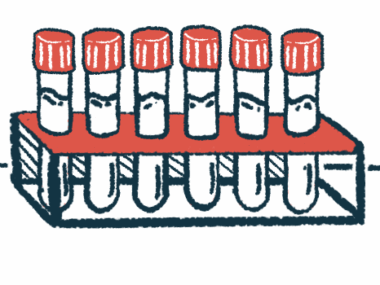Standardized SMA newborn screening may aid early treatment
Differences in practices could impact referrals, interventions, study shows
Written by |

Substantial differences in newborn screening (NBS) practices for spinal muscular atrophy (SMA) across the U.S. could impact referral patterns or the timing of therapeutic interventions, a study shows.
While healthcare providers evaluated newborns with positive results within the first week of life, many didn’t initiate therapy until after they were 3 weeks old, mainly due to issues with insurance.
“Future efforts should focus on uniform standards for state NBS program accuracy and efficiency of communications, and reducing barriers to timely treatment initiation are most likely to improve the equity of care of infants with SMA,” the researchers wrote. The study, “Newborn Screening for Spinal Muscular Atrophy: Variations in Practice and Early Management of Infants with Spinal Muscular Atrophy in the United States,” was published in the International Journal of Neonatal Screening.
In SMA, mutations in the SMN1 gene result in little to no production of the survival motor neuron (SMN) protein, leading to the progressive loss of motor neurons, the nerve cells that control voluntary movements, and subsequent disease symptoms.
The availability of disease-modifying therapies, including Spinraza (nusinersen), Evrysdi (risdiplam), and Zolgensma (onasemnogene abeparvovec), early diagnosis, and starting treatment before symptoms appear have markedly improved patient outcomes. These included achieving motor milestones, such as sitting, standing, or walking at the appropriate ages.
NBS programs to detect SMA at birth are available in all U.S. states, but each state determines the type of screening, how the results are communicated, and patient follow-up after an SMA diagnosis. Here, researchers conducted a retrospective study to quantify and describe the differences in state programs and healthcare provider practices for newborns across the U.S., based on a survey of state NBS programs and providers. NBS programs were evaluated in 43 states, with 30 states that had adopted the mandatory statewide NBS before 31 January 2022 responding.
Newborn screening and the start of treatment
Of 2,536,709 babies screened for SMA, 228 had a positive test, corresponding to an incidence of 1 in 13,862 babies screened (0.007%). Also, 393 tests were false positives, meaning the result indicated SMA, but subsequent testing failed to confirm the diagnosis. Most of these occurred in Georgia (92.6%).
Most states performed NBS in a state-run laboratory (56%), although regional labs (25.9%) and commercial labs were also used (19%), mainly employing a technique called quantitative real-time PCR (96%).
Only four states performed confirmatory genetic testing after a positive screening, while 12 also tested for the number of SMN2 gene copies, which can somewhat compensate for the lack of SMN protein, a higher number of copies generally being associated with less severe disease.
Following a positive screening, most states provided results to both the primary care provider and an SMA specialist, and performed short-term follow-up of SMA-positive infants, such as making sure the infant was referred to a specialized center, performing confirmatory results, or assessing treatment decisions. Few states had long-term follow-up and data collection.
Forty-one providers, representing 25 states, responded to the survey. Most were child neurologists (81%), worked in tertiary care centers (90%) and/or had training in neuromuscular medicine or testing (76%). Most providers said they’d evaluated up to 10 newborns with SMA in the previous two years, usually within an average of three days after the newborn tested positive for SMA. Confirmatory testing was performed by either the providers or were included in the NBS program.
Patients commonly started treatment between 2 and 4 weeks of age (66%), with more than half (53%) not starting before the patient was 3 weeks of age, usually due to delays related to health insurance. All but one provider had treated patients with Spinraza (98%), Zolgensma (95%), and Evrysdi (83%).
Most (81%) identified Zolgensma as their first-line treatment recommendation. Factors that determined the treatment choice were treatment efficacy, route/frequency of administration, SMN2 copy number, the presence of SMA symptoms, the side-effect profile, the mechanism of action, insurance authorization, and cost.
“The variability in the approach to NBS for SMA between states as well as in the clinical approach of providers caring for these patients highlights areas of potential inequality regarding the evaluation and management of this population,” the researchers wrote. “National consensus guidelines and educational programs specific for infants with SMA could help reduce these variations in practice patterns.” Future efforts should focus on consistent standards for newborn screening programs across states and on reducing barriers to initiate treatment in a timely manner, they said.







